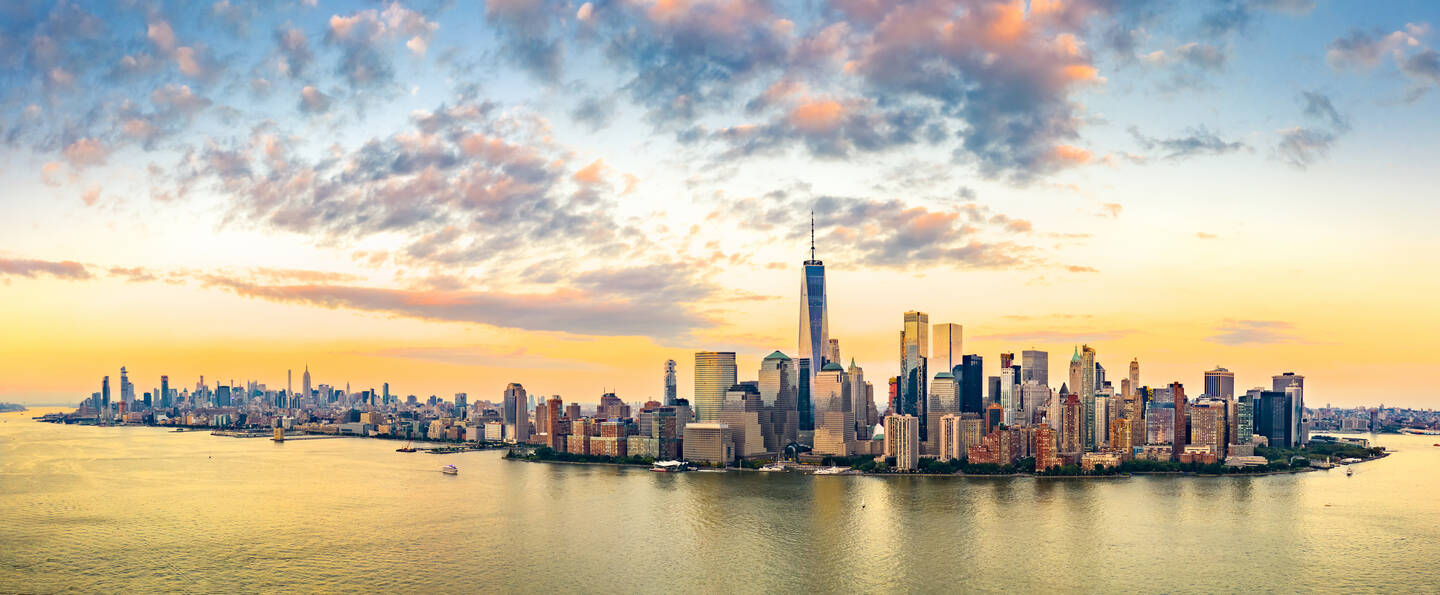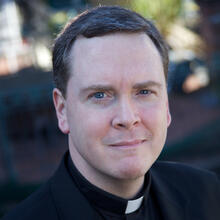“Nothing puzzles me more than time and space,” the English essayist Charles Lamb wrote, “and yet nothing troubles me less, as I never think about them.” That’s true as far as it goes—until circumstances beyond our control force us to think about them. We just lived through something like that. Like you, I spent the better part of the last two years trapped in the brutalist architecture of quarantine. My room in Midtown Manhattan suddenly felt a lot smaller and heavier, even oppressive. And like many of you, I resolved to try to do things that would make my world feel a bit bigger, to extend the borders that the pandemic had imposed on me.
I started by walking, by visiting places in Manhattan I had never been to before or that I had never thought to go to before or that I had gone to or passed through but had never really noticed before. And I took my rosary with me. Many years before, while living for a brief time in the interior of Guyana, South America, I had learned to pray and walk at the same time. If I hadn’t done that, I wouldn’t have been able to pray at all, because every time I sat down to pray there, the heat and labor of the day would catch up with me and send me snoozing. Praying the rosary while I walked had the effect of providing a structure and rhythm to my prayer while moving.
But it had another, surprisingly grace-filled effect: For one thing, I had to pray with my eyes open—obviously. That meant that everything I encountered became a part of my prayer rather than a distraction from it. Walking and praying in this way, in time, I began to see how time and space are truly “charged with the grandeur of God,” as Gerard Manley Hopkins, S.J., put it.
Walking and praying in this way, in time, I began to see how time and space are truly “charged with the grandeur of God,” as Gerard Manley Hopkins, S.J., put it.
So nearly 20 years on from Guyana, I again adopted this habit of praying and walking. But soon, walking couldn’t take me far enough to feel really free, to feel that I had been momentarily paroled from my Covid imprisonment. And that’s where CitiBike came in, the bicycle ride-share program here in New York City. I discovered that with one of CitiBike’s e-bikes, I could cover a vast distance in relatively little time and go places that are only accessible by bike or are just too far to hoof it to. (By the way, for that very reason—the greater distances we travel, as well as the greater frequency of our bicycle usage—e-bikers get just as much exercise from biking as conventional bikers, no matter what people say. Sorry if that sounds defensive; but I am, in fact, defensive).
But where to go on my e-chariot of fire? I consulted the map, a real one, the kind printed on paper, which one can study intently without a battery or eyestrain. And then it happened. I noticed that by starting at the tip of lower Manhattan and then biking along the perimeter of the entire island in a counterclockwise direction, encircling the borough and ending where I began, I would complete a pattern that looked almost exactly like the pattern of a rosary. So with my e-bike and rosary, I set out to do precisely that, to envelope Manhattan in a prayer, which I would offer urbi et orbi—for the city and the world—asking God, who is beyond time and space, to bless the here and now that is the capital of the world.
Time and Space
Even casual readers of my column in America might have noticed that I have a preoccupation with notions of time and space: not the vast, infinite reaches above and beyond, but the vast, finite matrix of here and now. I suppose it stems from the countless hours I spent as a boy studying maps, noticing especially how historical events like war or industrialization or migration have radically changed our maps and the artificial boundaries that we impose on time and space. Yet I am fascinated by how we experience time and space for other reasons, too, which have more to do with Jesus Christ than Gerardus Mercator.
Every Sunday at Mass we make the astonishing claim that Jesus Christ, the one “through whom all things were made…came down from heaven.” We say these words so often that we sometimes fail to recognize their world-rocking importance. But what we are saying when we make this profession is something truly astounding, almost unbelievable: God, who is beyond time and space—who created time and space—somehow entered time and space, and charged it, always and everywhere, not only with the grace of the God who creates but who also redeems.
So with my e-bike and rosary, I set out to do precisely that, to envelope Manhattan in a prayer, which I would offer urbi et orbi—for the city and the world.
In other words, God threw out the map we humans had imposed on his creation. As the hymn goes, “I scarce can take it in.”
I admit this sounds terribly abstract. But then I remember that what I’m talking about isn’t just a historical claim but something that happens in our present, at every Mass, when God breaks into our here and now and unites past, present and future in the Eucharist. An older rendering of the mystery of faith captures this perfectly: “Christ has died, Christ is risen, Christ will come again.” In the Eucharist, then, God changes the borders in our maps of reality. It is both a spectacular and a common occurrence, which we can take for granted.
Yet that central mystery of our faith is also the warrant for believing that God can be found in all things—in all time and space—which is the central insight of St. Ignatius Loyola. And as if the life, death and resurrection of Jesus were not enough to establish the basis of that belief that God can truly be found in all things, then consider also the life of his mother, Our Lady, who has a habit, now in its third millennium, of making precisely this point by showing up at the strangest of times and in the oddest of places, turning the middle of nowhere into the center of somewhere. Lourdes, Knock, Fatima—these are not exactly bustling metropolises even today, and at the time Our Lady appeared in those places, you would have been hard-pressed to find them on a map.
Our Lady of Manhattan
One of the really cool things about thinking of the perimeter of Manhattan as the route for a rosary by bicycle is that it begins and ends with sites associated with two amazing saints. At the southern tip of the island, roughly where the medallion would be located on a rosary, is the Shrine of Saint Elizabeth Ann Seton, the first American-born saint, who was canonized in 1975. Mother Seton’s shrine occupies a red brick colonial church just across the street from Battery Park and the Staten Island Ferry.
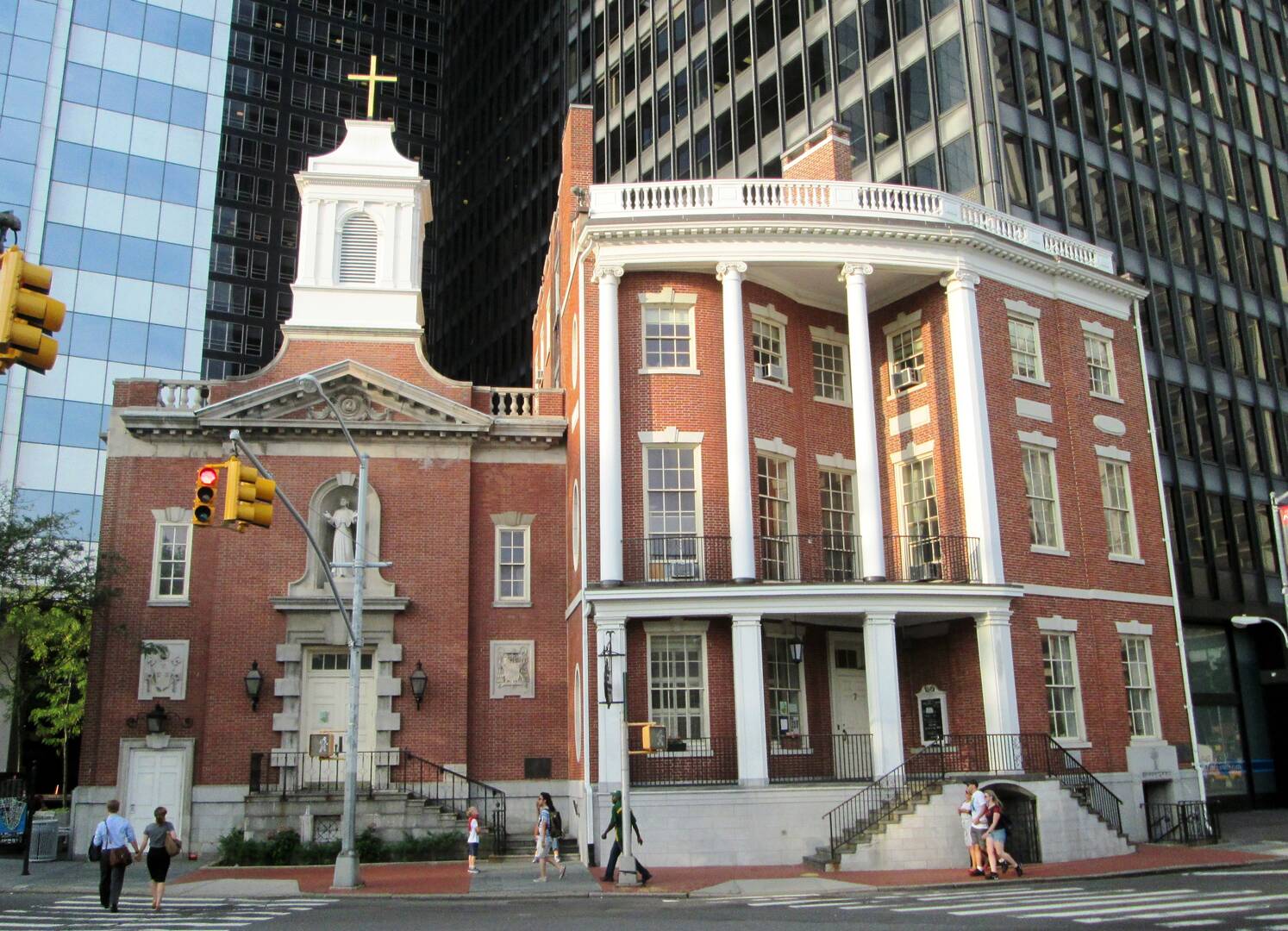
I thought this was the perfect place to start the journey, by popping in, paying my respects and asking for the protection of Our Lady of the Way. The shrine was closed because of Covid restrictions, but I decided to set out from there nonetheless. So after saying hello from afar to Mother Seton, I grabbed an e-bike and headed out.
I decided that I was going to pray the entire rosary, meaning all four sets of mysteries. So I marked on my map the places where I would stop and pray each set. Working my way counterclockwise around Manhattan, I chose locations that seemed to evoke the spirit of each group of mysteries.
The Joyful Mysteries – Stuyvesant Cove Park
1. The Annunciation
2. The Visitation
3. The Nativity
4. The Presentation of Jesus at the Temple
5. The Finding of Jesus in the Temple
Stuyvesant Cove Park is a lovely spot on the East River, located near East 20th Street and F.D.R. Drive and approximately four miles north of the Brooklyn Bridge. Opened in 1883, the Brooklyn Bridge symbolizes the union of the boroughs of Manhattan and Brooklyn and the birth of modern New York City. Bicycling underneath it seemed appropriate, since one of the first mysteries I contemplated when I reached Stuyvesant Cove Park was the birth of Jesus.
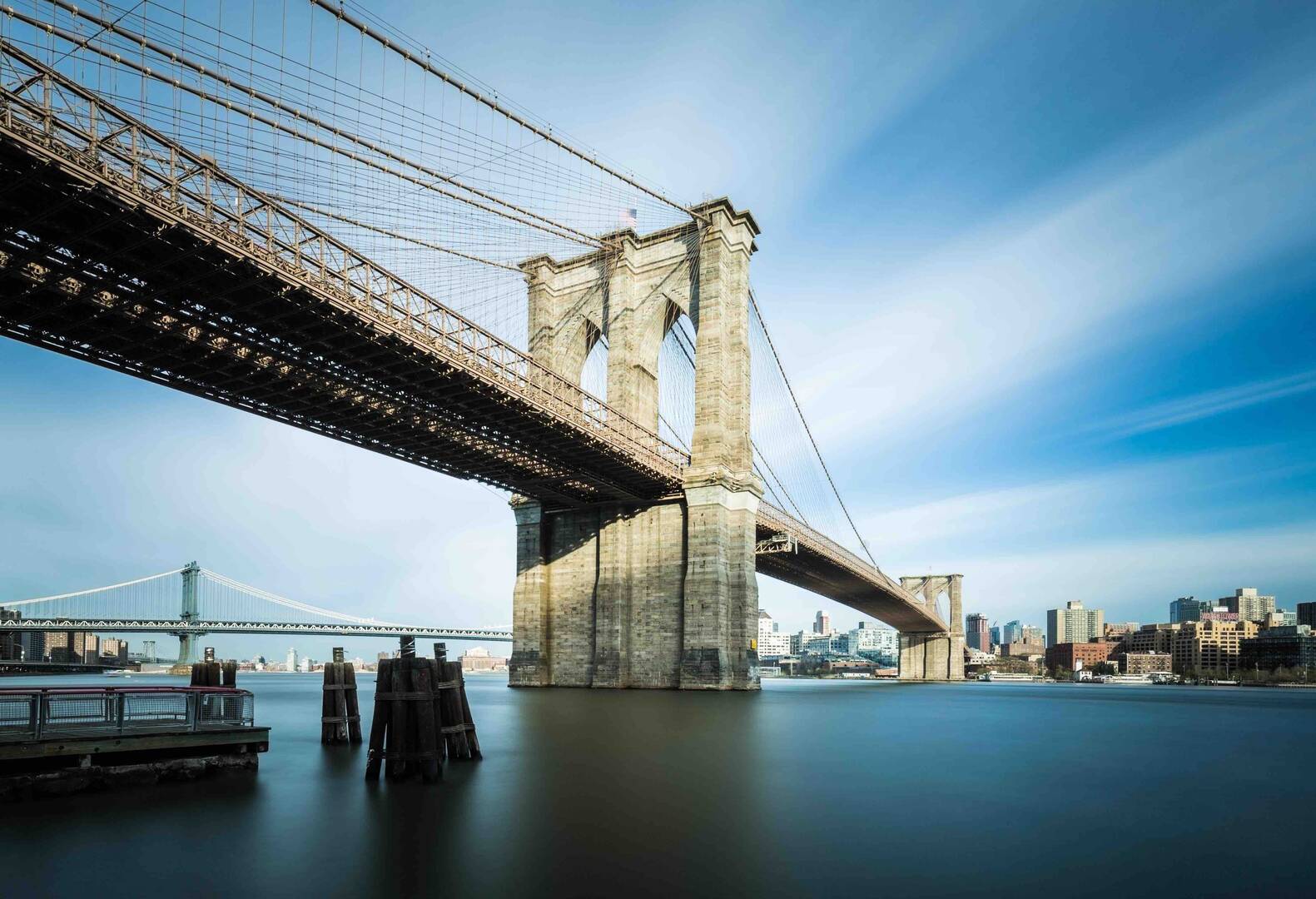
After Stuyvesant Cove Park, I had to turn left and head into the city, as the river bike path is interrupted just south of the United Nations at around 40th Street. This made me a little nervous, as I was now in the bike lanes of the main thoroughfares. But I soon adjusted. And there were other graces that sprang from this little detour. I decided to say a prayer for the people and landmarks that I passed along the way: “There’s the United Nations! Pedal out a Hail Mary for peace! There’s the office of Cardinal Dolan! Say an Our Father for him and the archdiocese! There’s Memorial Sloan Kettering! Say a Hail Mary for the patients and staff.” Praying in this way, for the people and places I was passing, made the whole experience even more grace-filled, as if I was, in my own little way, consecrating the whole city to Jesus through Mary.
The Luminous Mysteries – Carl Schurz Park
1. The Baptism of Jesus in the Jordan
2. The Wedding at Cana
3. Jesus’ Proclamation of the Kingdom of God
4. The Transfiguration
5. The Institution of the Eucharist
I rejoined the bike trail along the East River in the upper east 70s, and at East 87th Street I stopped in one of the little gems of the New York park system: Carl Schurz Park. Overlooking the East River, with beautiful views of Roosevelt Island, the park abuts Gracie Mansion, the official home of the mayor of New York. (I said a Hail Mary for him, too. He needs them, especially when it snows).
The lighthouse at the northern tip of Roosevelt Island was my cue: This is where I prayed the Luminous Mysteries. To the right was the Queensboro Bridge, now known as the Ed Koch Bridge, named for the former mayor. Aha! A couple of America magazine connections: The Queensboro Bridge opened in 1909, the same year that America began publication; and Ed Koch was a good friend of my predecessor as editor in chief, Joseph A. O’Hare, S.J, who served from 1975 to 1984. But I digress.
After changing bikes (I needed a fresh battery), I took a brief pedal north before the bike trail again came to an abrupt end at about 111th Street. So I crossed back into Manhattan on the pedestrian bridge nearby and picked up the bike lane at 111th Street and First Avenue in Harlem, heading north. It was now time to use the bike lanes to cross Manhattan from east to west, first at 120th Street, then turning right onto Saint Nicholas Avenue (the heart of Harlem), past the beautiful statue of the abolitionist Harriet Tubman (said a Hail Mary for racial justice!) and north to the Harlem River Greenway, then Dyckman Street, and finally Washington Heights and the shrine of Mother Cabrini at 701 Fort Washington Avenue. In 1946, Mother Francis Xavier Cabrini became the first American citizen to be canonized. Her place of repose is fittingly located at the highest point in Manhattan, a little beyond the halfway point of my journey.
As I looked straight ahead toward the massive, awe-inspiring mountains of steel in lower Manhattan, I thought of how Jesus may have felt as he left his home in Galilee and set out for Jerusalem
After some rest and a meal and a change of bikes, it was time to head south along the Hudson River Greenway, one of the premier bike trails in the United States, with stunningly beautiful views of the Hudson River and the Manhattan skyline. As I followed the trail below the George Washington Bridge, emerging near the small lighthouse at the bridge’s base, I could see my destination, Lower Manhattan, in the far distance. The rocky shoreline near the George Washington bridge reminded me of the shore of the Sea of Galilee, and as I looked straight ahead toward the massive, awe-inspiring mountains of steel in lower Manhattan, I thought of how Jesus may have felt as he left his home in Galilee and set out for Jerusalem—how the sight of the Holy City must have filled him with fear as he contemplated the fate he would meet there.
The Sorrowful Mysteries – Pier 45
1. The Agony in the Garden
2. The Scourging at the Pillar
3. The Crowning With Thorns
4. The Carrying of the Cross
5. The Crucifixion and Death of our Lord
Part of what makes the Hudson River Greenway so special is the way the city has transformed the old docks and piers along the river into recreational space for residents and tourists. As I approached the park at Pier 45, located near the end of Christopher Street in the West Village, One World Trade Center came fully into view for the first time. The nearby park seemed like a fitting place to pray the Sorrowful Mysteries, remembering that the Lord’s passion was not his alone but included all the passions of history, including ours today.
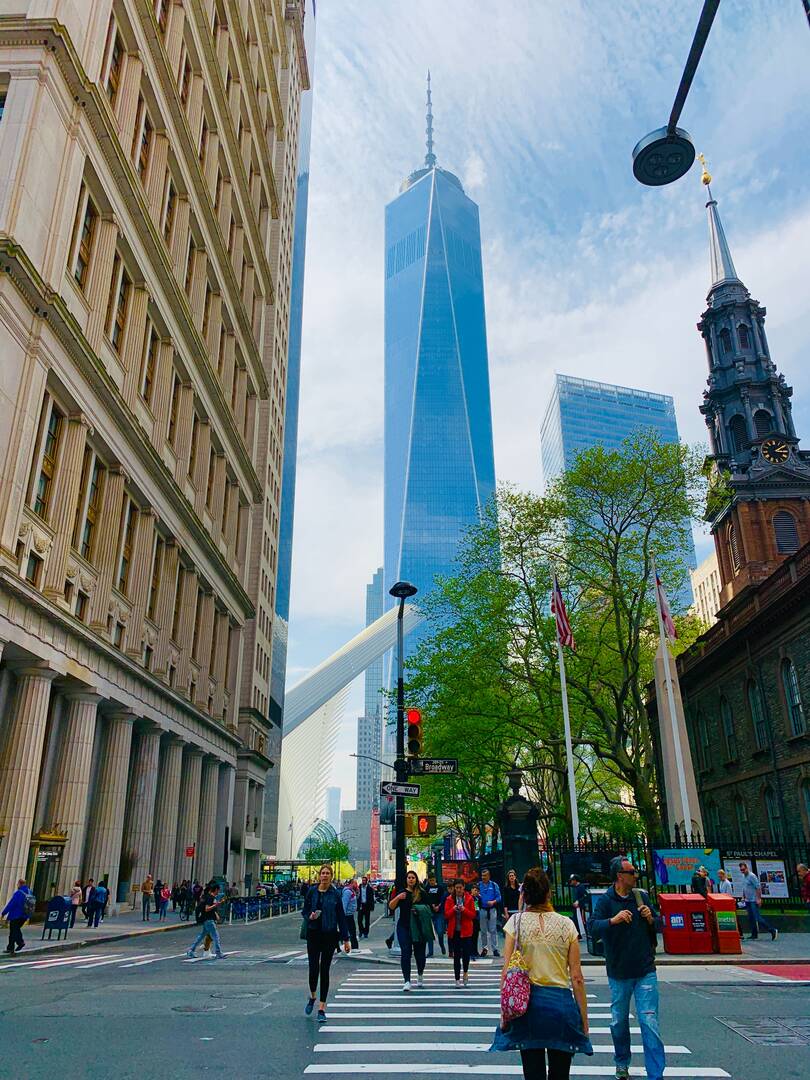
After I had finished my prayer at Pier 45, I walked my bike several blocks along the greenway, from Christopher Street to Chambers Street. It was a reminder that Jesus himself walked during his passion, but it was also my modest tribute to the men and women who perished on 9/11, as well as the thousands of people who had run for their lives on the very pavement beneath my feet.
At Chambers Street, I mounted my bicycle again and headed south for the last part of the journey, the shortest segment of the whole trip. I turned right onto West Thames Street, parking my CitiBike at the nearest stand. Turning left onto South End Avenue, I walked into South Cove Park, where I was surprised by joy to find another memorial to Mother Cabrini! But even more, South Cove Park and the adjacent Robert Wagner Park have the most stunning views of New York Harbor, Ellis Island and the Statue of Liberty—the perfect place for contemplating the Glorious Mysteries.
Glorious Mysteries – South Cove/Wagner Park
1. The Resurrection
2. The Ascension
3. The Descent of the Holy Spirit
4. The Assumption of Mary
5. The Coronation of the Virgin
How fitting that I was contemplating the coronation of the Virgin Mary while gazing at a woman wearing a crown. But there is a more important reason why this was the perfect place to close out my rosary by bike, and that can be summed up in one word: freedom. Yes, the lady in the harbor symbolizes liberty. And for millions of immigrants (so many of them Catholics), Ellis Island symbolized both the end and a new beginning in their quest for liberty.
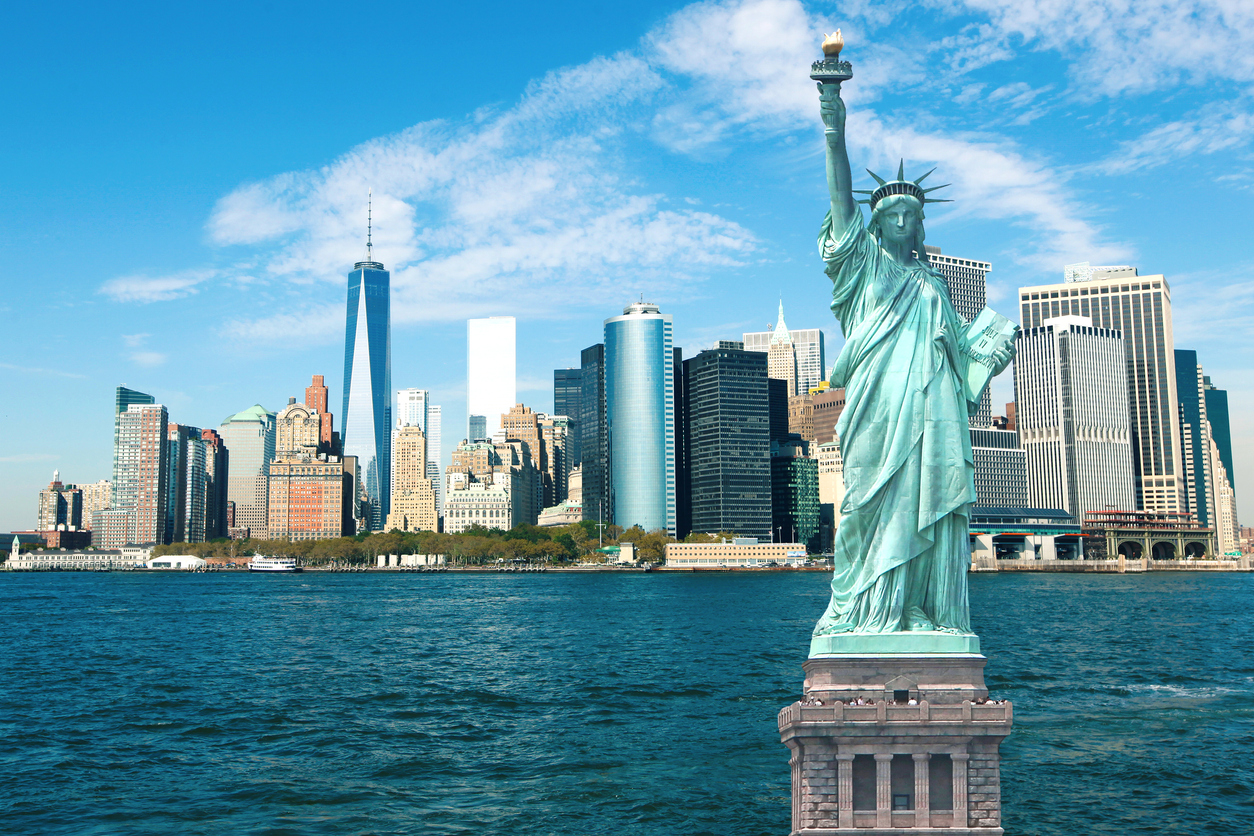
But more than that is the truth we know in faith, that freedom, in any ultimate sense, comes only from Jesus Christ, whose incarnation through the Virgin Mary destroyed the border between time and eternity, redrew the map of creation, and charged the world anew with the grandeur of its creator.
Truly, what a glorious mystery.
If You Want to Give it a Try
If you live in New York or plan to visit soon, then you might like to give this rosary by bike a try. On an e-bike, either your own or one available from CitiBike, you can complete this roughly 35-40 mile route in a long day. If you do use a CitiBike e-bike, be sure to plan ahead, as you will need to change bikes at a station along the way in order to get a freshly charged battery. This might mean doing the trip on a weekday, when bikes are more widely available.
I know many people are worried about the traffic and bicycling in New York. Honestly, I was, too. In fact, I avoided biking in New York for many years for that very reason. But if you use the bike lanes, observe the traffic laws, wear a helmet and take your time, you will discover, as I did, that it is a pretty safe way to travel. In fact, many more people per capita are involved in car accidents than bicycle accidents in New York City. That being said, the road surfaces are uneven in places and the different bikeways are in varying states of repair (which predictably—and unjustly—is in direct relation to the average level of income in the neighborhood), so be prepared to improvise.
A rosary by bike is prayer with our eyes wide open, in which we ask God to help us to see his creation in a new way—to find God in the people and places we are encountering.
More important, here’s some of what I learned through praying this way. First, I’ll say it again: This is a different way of praying. Most of us are accustomed to thinking of prayer as sitting in a church or other quiet place, closing our eyes and opening our hearts. That’s a wonderful way to pray; I do it every day. But a rosary by bike is prayer with our eyes wide open, in which we ask God to help us to see his creation in a new way—to find God in the people and places we are encountering.
In other words, there are no distractions here. Everything we see and smell and hear, however earthy or even annoying, becomes a part of this prayer. This might seem strange, but it can really rock your world for the better. For example, while I was praying with the mystery of the Nativity, I watched a mother playing with her baby in the park. It was a wonderful grace to see that mystery in light of the humanity in front of me.
Second, while you will be stopping and praying in specific places and with specific mysteries, that is not the only time to pray. As you pass a school, ask the Lord to bless the students and teachers, to give them wisdom. As you pass the United Nations, say a Hail Mary for peace. As you pass by a theater, ask God to help the artists glorify God through their performances.
Last, if you complete the whole route, which I highly recommend, you will encounter the world in all of its diversity. You will see every race of human being; you will hear a hundred different languages; you will see great wealth and also terrible poverty. You will bike through some of the most scenic areas in North America, and you will see some places that are downright depressing and kind of sketchy. Don’t skip any of it! This is the world God entered. God became incarnate in a specific time and place, a time and place that was also a mix of lights and shadows, of rich and poor, of beautiful and wretched.
Above all, have fun; and if you have a minute, please say a Hail Mary for me along the way. I need it. Especially for my calf muscles.
Our Lady of Manhattan: Pray for us!

